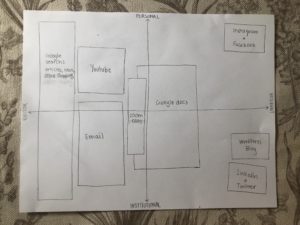What are the benefits of a diverse and inclusive PLN in social media sharing that understands where you are coming from with messaging that impacts the community?
A diverse and inclusive PLN in social media is about conversations, community, connecting with the audience and building relationships (Clark & Aufderheide, 2009). It supports the realization that everyone is different and reinforces that we’re more connected and have more in common with each other as we communicate using different platforms. It’s an opportunity for individuals to connect with people of all different backgrounds in order to share experiences, find commonalities, and to solve problems in new ways. When we communicate with someone who’s different from us, for example, regionally or generationally, we allow ourselves to appreciate new viewpoints and to benefit from their expertise and experience.
In addition, a diverse and inclusive PLN in social media helps build engagement and trust within a community. From this weeks video, Mike Russel mentioned that from the many social media platforms he has launched for the school district 79, he has been able to engage Indigenous people and Elders into the community by giving them a platform to use their voice (EDCI_338, 2020). His story telling strategy has been a big part in raising awareness to structural inequality in the community and bringing forward voices that are not traditionally heard (2020). This illustrates that social media platforms have a huge ability to bring awareness and share important messages that need to be acknowledged more (2020). Furthermore, these tools have helped Mike build a lot of trust between him and the Cowichan community and as a result of that, Elders are reaching out to him in order to share their story (2020). This safe space that Mike has built for Elders to share their stories is opening up the door to engagement and the passing on of knowledge and important messages to the community (2020).
References:
Clark, J., & Aufderheide, P. (2009). Chapter 4: A New Vision for Public Media: Open, Dynamic, and Participatory. Media and Social Justice. Doi: 10.1057/9780230119796
EDCI_338. (2020, October 18). EDCI_338 A01 – Russel, M. YouTube. Retrieved from https://youtu.be/vH_UiTWYYw




